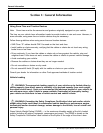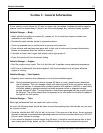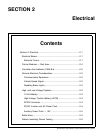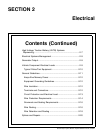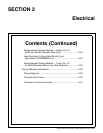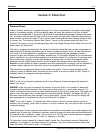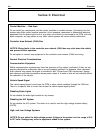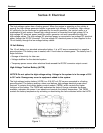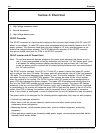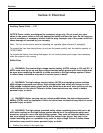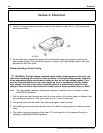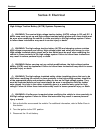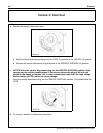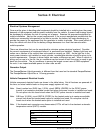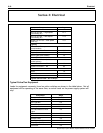
Electrical 2-3
Section 2: Electrical
The high-voltage system has a floating ground. When the engine is operating or the vehicle is
moving, the high-voltage generator begins to generate high voltage, AC electricity. High-voltage
AC electricity can be consumed or generated by the motor generator, the traction motor or a
combination of both motors. Excess high-voltage current is converted from high-voltage AC to
high-voltage DC electrical power inside the motor generator unit and transmitted through the
high-voltage cables. The high-voltage DC electrical power is converted to low-voltage DC electrical
power through the DC/DC converter. This low-voltage DC electrical power is then supplied to the
12-volt battery through the low-voltage battery cables.
12-Volt Battery
The 12-volt battery is a standard automotive battery. It is a DC source connected in a negative
ground system. The battery case is sealed, with 2 vent holes to release gases. The battery has 3
major functions:
• Storage of electricity for later use
• Voltage stabilizer for the electrical system
• Temporary power source when electrical loads exceed the DC/DC converter output current
High-Voltage Traction Battery (HVTB)
NOTICE: Do not splice the high-voltage wiring. Voltage in the system is in the range of 216
to 397 volts. Damage may occur to equipment added to the system.
The high-voltage traction battery (HVTB) is a 216-397 volt DC source connected in a floating
ground system. The battery receives, stores and delivers high-voltage electrical power when
required. It contains the traction battery control module (TBCM), which controls the higher
functions of the battery. The TBCM also estimates the state of charge, estimates the power
available, estimates the power it can absorb and controls the battery temperature. The TBCM
controls the battery temperature by activating or deactivating the fans contained within the HVTB.
Figure 1.
2010 Escape Hybrid, Mariner Hybrid Modifiers Guide, 07/2009



